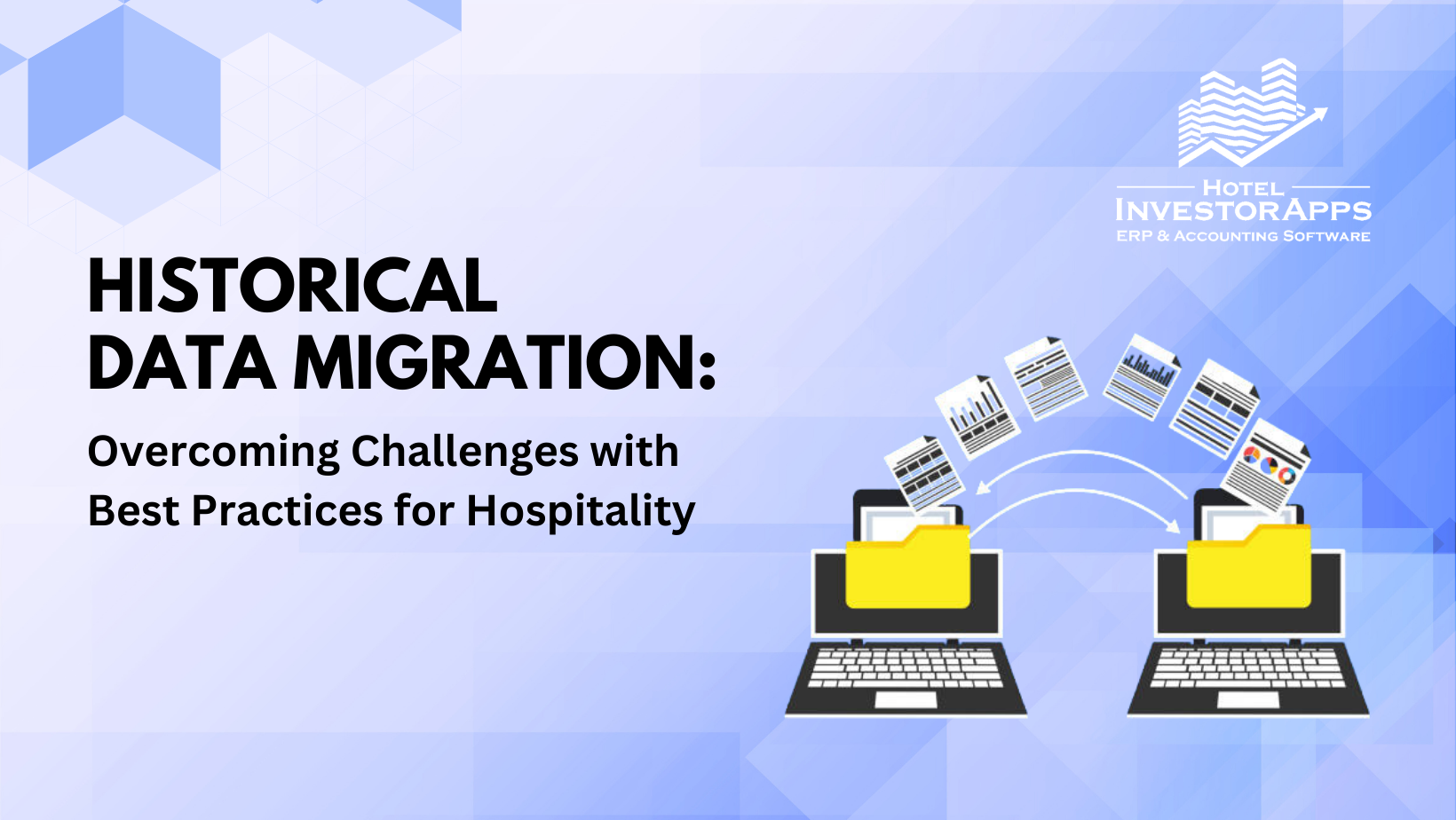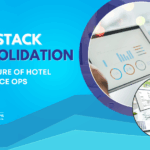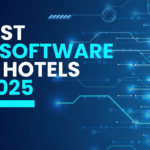The migration of historical financial data is one of the most critical yet challenging aspects of transitioning a hotel to a new management or accounting system. Without properly migrated historical financial data, hotels risk losing valuable insights that drive financial planning, forecasting, and operational decision-making.
In this guide, we’ll explore the common pitfalls of historical financial data migration across platforms and share best practices to ensure your financial history remains intact, accessible, and actionable.
| Key Takeaways |
|
The Importance of Historical Data
Hoteliers know the importance of historical data better than anyone else—it’s the wellspring of knowledge you draw upon to steer your business forward, mining through years of revenue, expenses, occupancy rates, and a host of other metrics to discover patterns and trends.
It’s this keen understanding of the past that enables you to craft your budget, forecast your needs, evaluate performance, and plan your strategy. However, all these insights are only as good as the data they’re drawn from. And the accuracy of that data depends on the skill of the migration process.
Transferring years of accumulated data into a new system can be complicated, to say the least.
Common Challenges in Migrating Historical Data
When it comes to migrating historical data, the path is often fraught with challenges. Some of the most common ones include:
- Data Standardization: Different systems have varying data formats and standards. This often leads to issues with compatibility and requires substantial effort to clean, standardize, and map data from the old system to the new one.
- Data Incompatibility: Differences in charts of accounts, vendor lists, and more which vary between properties, cause problems for data consolidation.
- Data Accuracy and Completeness: Data can get jumbled, lost, or incorrectly mapped during migration, leading to inaccuracies and gaps. This becomes especially prevalent with non-standardized data or when the system attempts to auto-format data to look visually appealing at the expense of accuracy.
- Inability to Export Complete Data: Sometimes, your previous system may limit the amount of data you can export due to system constraints or to maintain customer lock-in. This means you may be unable to carry over all the historical data you require.
- Time-Consuming Process: Migrating years of data can be time-consuming, often requiring manual review and correction of data errors. This can slow down your migration and onboarding project significantly.
How Much Data Transfers Over? Trial Balance vs GL Level History
Another issue on some accounting systems is the potential for data that does not carry over.
It’s important to know when transitioning to a new accounting system if that system supports GL level detail transfer, or only Trial Balance level.
Trial Balance detail will provide a summary of balances, but it cannot provide the story behind the numbers. As an example, with trial balance historical detail, you’d be able to see for a given month that your “Mechanical Expenses & Repairs” account changed $25,000 from one month to the next, but you wouldn’t have the ability to see the activity that led to those changes.
With General Ledger (GL) level detail, you could drill down to see that those were elevator and escalator repairs above the service agreement, and view the recorded service agreements, repair tickets, and more. This level of detail allows for a deeper understanding of financial activities and trends, aiding in more accurate budgeting, auditing, and decision-making processes.
More reading: The Danger of Being Caught without GL History in an Audit
Best Practices from HIA – Overcoming Migration Hurdles in Historical Data Import
At Hotel Investor Apps (HIA), we recognize the crucial importance and common challenges of importing historical data, which is why we developed a streamlined, user-friendly approach.
HIA’s ERP, designed specifically for hospitality, offers core functionality, such as a Global Chart of Accounts and Global Vendor List, which addresses some of the common migration challenges. The addition of its industry-first import tool allows data coming from different systems and different formats to be accurately mapped to the global COA, organizing historical data for greater clarity.
Best Practice: Import Full GL Level History, Not Just Trial Balances
We developed the hotel industry’s first GL Level History Import tool to make sure that all key data is captured and transferred over, not just Trial Balances. (Read more on the tool here.)
Additionally, this tool is ground-breaking for its speed and capacity. Unlike other import tools that require painstaking month-by-month uploads, HIA allows you to import multiple years of data at once—saving you time and ensuring accuracy.
Best Practice: Bring Over at Least 2-3 Years of Financial History
Or as many years of financial history as you would like.
Our Onboarding Team focuses on importing your most recent years of GL level data into our platform (typically 2-3 years), so hotels can retain the transaction-level information they’ll need for auditing, decision-making, and trend analysis.
From there, we give our clients full autonomy to manage and import their own data using our tool, giving them the flexibility they need to add as much historical information as they want, and at their own pace.
For example, one of our clients wanted to import their full 20 years history into our system, and so with our tool they were able to do so. They now have 20 years of history accessible in the system.
Best Practice: Make Sure Historical Data is Workable
Additionally, it is important to make sure that any historical data that you bring over into a new system can not only be referenced, but also worked with.
For example, if you discover that a past expense needs to be reclassified, you need a system that will allow you to make that correction. With HIA you can go in and reclassify an historically imported entry. The system will maintain the original entry and include a note on the change, so the reclassification is made and there is an entire audit trail of adjustments for full transparency.
Summary
While bringing a new hotel, or group of hotels, into your management folds and migrating its accounting system can be a daunting task, these best practices will help make it a more straightforward and manageable process.
And if you are ready to upgrade your accounting software to the hospitality industry’s first ERP financial management system built for hotels – you are in good hands with HIA who set a new standard for accuracy, completeness, and speed in migration.
Ready to see how it works? Schedule a demo today

Director of Marketing at HIA
Elisa Fritsch, Director of Marketing at Hotel Investor Apps (HIA), contributes 15+ years of sales and marketing experience from a wide range of corporate to start-up environments. At HIA, Elisa focuses on marketing strategy, content, and leveraging her hospitality industry knowledge to drive growth.










